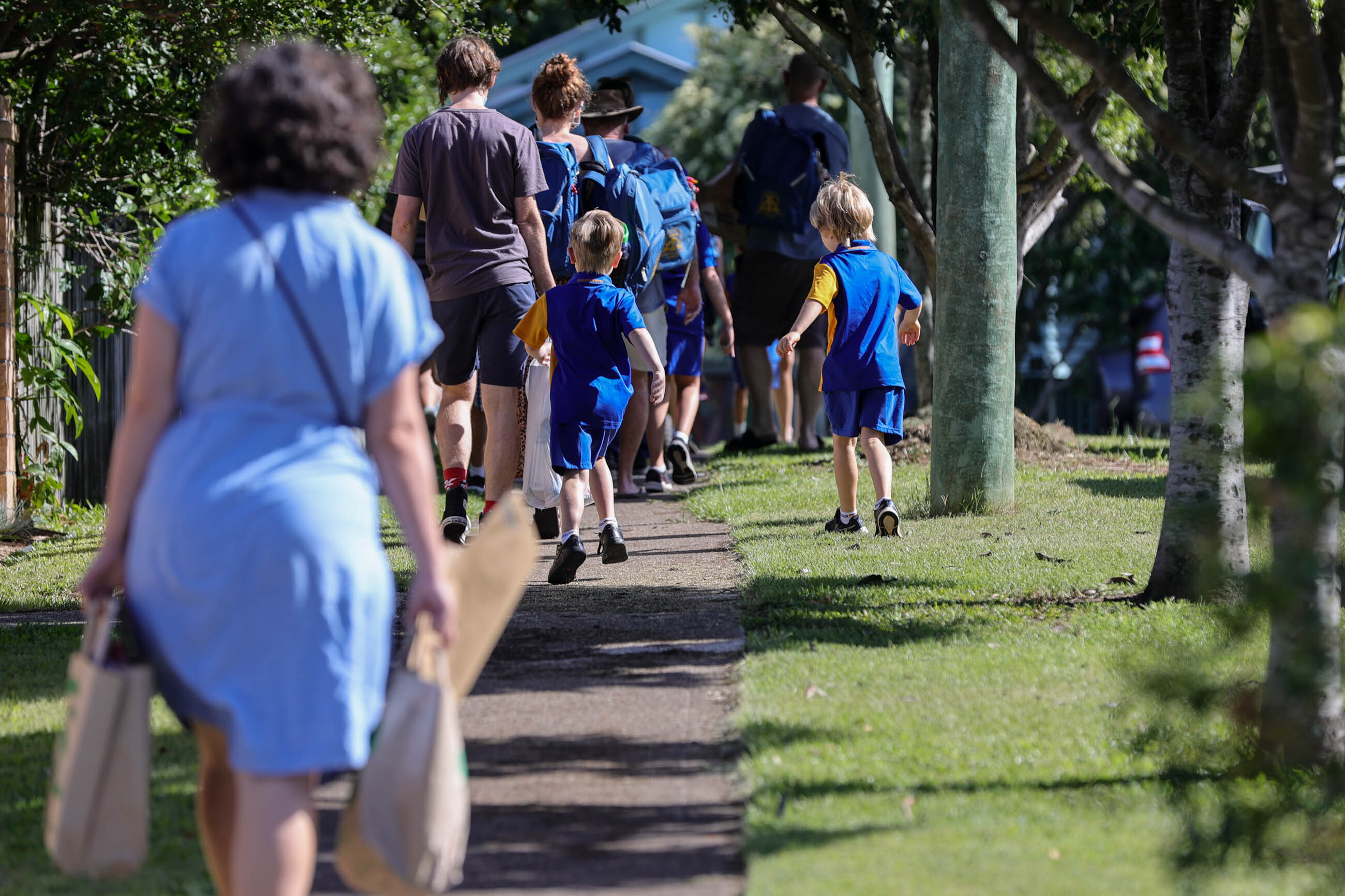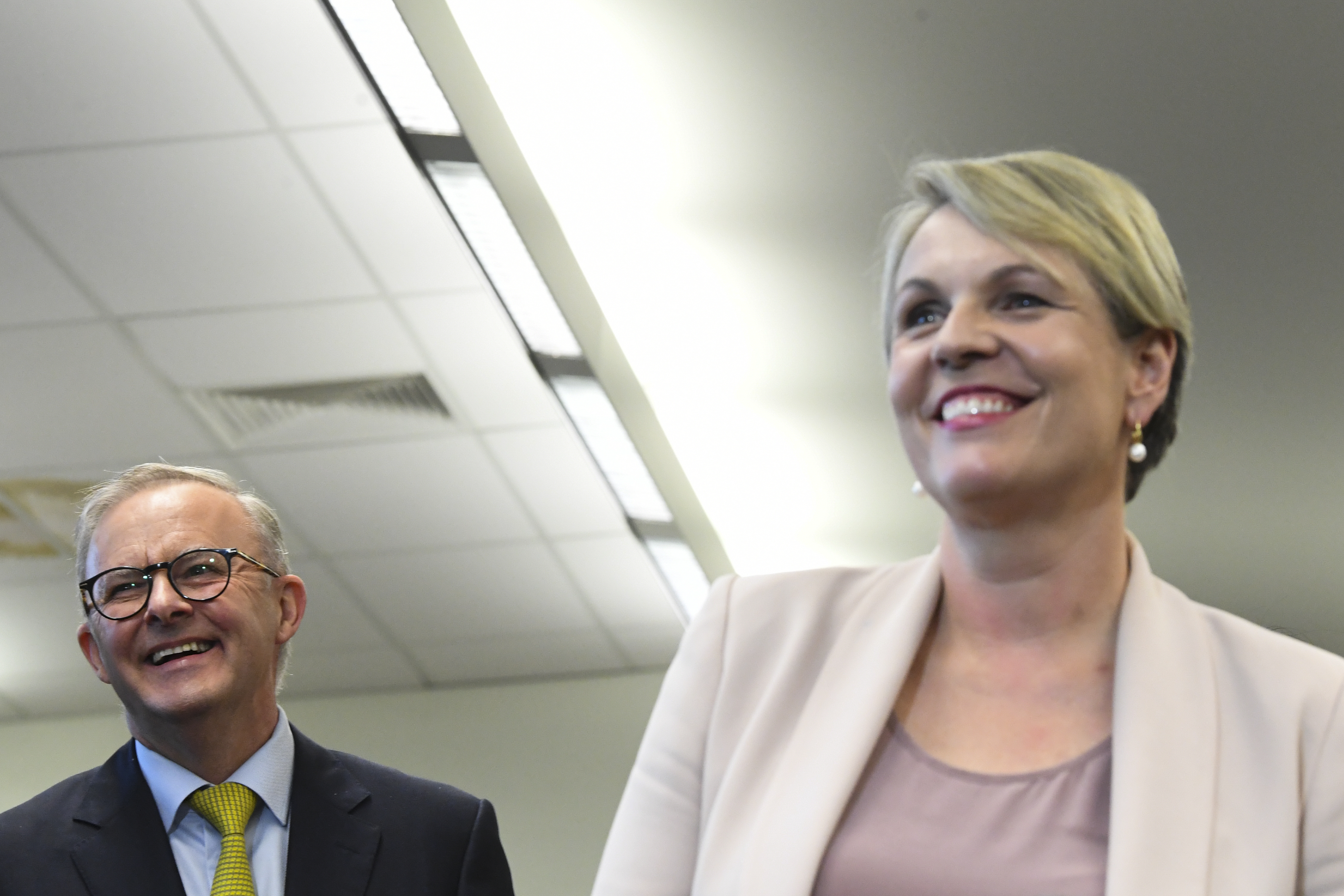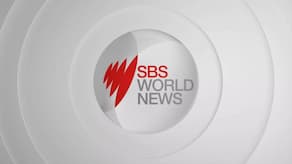Labor is looking at splashing nearly $150 million on getting more high achievers into teaching and boosting the numbers of science and mathematics teachers.
The plan is aimed at reversing nearly two decades of declining performance in Australian students.
In a debate against Prime Minister Scott Morrison on Sunday night, Opposition Leader Anthony Albanese said if elected he would work every day to make Australia a better country.
"There are four words you will never hear from me: 'That's not my job.' I will never say it," he said during the second Leader's Debate on Sunday.
"If I get the job (of prime minister), I will do the job each and every day."
Labor's plan for the education sector comes as it faces a post-pandemic shift, with teachers saying they are burned out after two years of lockdown and educators in NSW striking last week for better pay.
The sector sees at least one in three teachers quit in their first five years of teaching, with unions complaining of extra workloads pushing members to their limit.
Labor leader Anthony Albanese said his party's plan will incentivise the best graduates to take up teaching.
"We want to make sure our kids get the best education they can. That means we have to make sure they get the best quality teaching," he said.

Students are seen entering school grounds for their first day back of the year in Brisbane on 7 February 2022. Source: AAP / RUSSELL FREEMAN/AAPIMAGE
It will also fund 1,500 extra placements to retrain mathematicians and scientists and support them as they work part-time as teachers while getting their masters degree in education.
Labor also says it will work with the states and territories to boost career options for existing teachers, including considering higher pay for elite teachers and more chances to share their skills with other teachers without having to leave the classroom.
The updated plan will be funded by $146.5 million over four years.
Shadow education minister Tanya Plibersek said boosting student results was one of the most important things Australia could do.
"If we want a better future in Australia, we need a smart, skilled workforce so we can compete for jobs and growth with our neighbours," Ms Plibersek said.

Opposition leader Anthony Albanese listens to shadow Education Minister Tanya Plibersek speak to the media during a visit to Holmesglen TAFE on Day 24 of the 2022 federal election campaign, in Melbourne, 4 May 2022. Source: AAP / LUKAS COCH/AAPIMAGE
Acting Education Minister Stuart Robert has said more money wasn't the answer to boosting student results, instead the government was focused on shaking up the national curriculum.
NSW and Victoria recently rejected an updated history curriculum amid concerns it was downplaying Indigenous history.
Support for regional media
A re-elected coalition government will provide support for regional newspapers to assist with rising costs of print production driven by global pressures.
A new $10 million round under its public interest news gathering program will allow eligible publishers to apply for funding in the face of newsprint prices rising by up to 80 per cent.
In the second leaders' debate on Channel Nine on Sunday night, Prime Minister Scott Morrison spruiked his government's track record of handling the economy.
"It's a choice between a government that has a strong economic plan...now is not the time to risk things on the unknown," Mr Morrison said.
"Labor have no plan."
Communications Minister Paul Fletcher said the government's public interest news gathering program is a tried and tested model that has provided support for regional newspapers and broadcaster during the pandemic.
"Ongoing volatility overseas is having an impact back home," he said.
"We will move urgently to deliver this new round following the election, working closely with the sector, with payments expected to be made from July 1 when newsprint prices are due to increase."
Funding will be contingent on no newspaper closures or job losses due to increased newsprint prices.
In addition, the government will undertake further work following the election on the long-term sustainability of the sector.
Up to $2 million will also be provided to fast-track an investment ready analysis for the replacement of the coal-fired boiler at Norske Skog's Boyer Mill, Australia's only producer of publication grade paper.
The analysis is part of a larger investment in partnership with the Tasmanian government and Norske Skog to help secure a long-term future for the mill, located north of Hobart.
"Our regional newspaper publishers employ thousands of people in regional Australia and regional manufacturers like Norske Skog employ many more," Regional Communications Minister Bridget McKenzie said.
"Locally printed newspapers are so important for our regional communities because they tell local stories that will never be covered by the bigger publishers."




